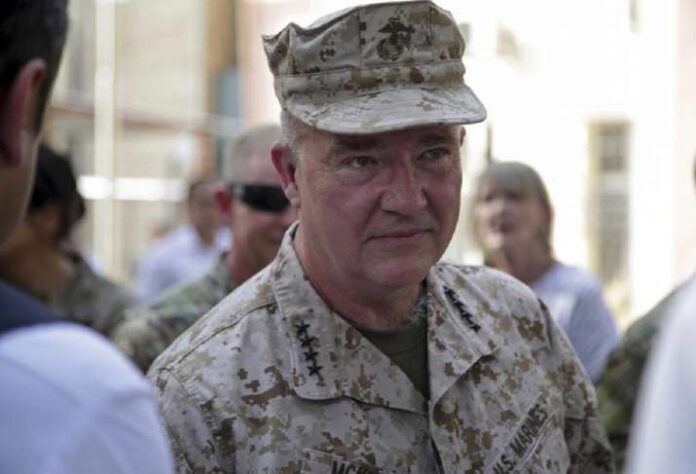| Translate This News In |
|---|
The top US commander for the Middle East said Thursday that the US will keep the current 2,500 troops in Iraq for the time being, but that he expects greater attacks on US and Iraqi personnel by Iranian-backed militias eager to see American forces depart.
Despite the United States’ move to a non-combat role in Iraq, Marine Gen. Frank McKenzie told The Associated Press at the Pentagon that air support and other military aid will continue to be provided to Iraq in its fight against the Islamic State.
He noted that Iranian-backed militias want all Western forces out of Iraq and predicted that the current surge in violence would go until December.
“They sincerely want all US soldiers to depart,” he added, adding that “as we approach the end of the month,” “that may inspire a response.”
The Iraqi government stated earlier this week that talks to conclude the US combat campaign against ISIS had come to a close. Because US personnel have mostly served as advisers for some time, the announced shift will have little impact. The declaration follows the Biden administration’s decision in July to bring the US combat mission in Iraq to a close by December 31.
“By reducing the amount of bases we don’t need, we’ve made it more difficult for enemies to attack us.” On the other hand, the Iraqis still want us to stay. McKenzie continued, “They still desire interaction and presence.” “We’ll stay as long as they want us to, and we can both agree on that.”
He believes that Islamic State fighters will continue to pose a threat in Iraq, and that the group will “recreate itself, perhaps under a different name.” The key, he continued, will be preventing IS from forming alliances with other forces around the world, allowing it to grow stronger and more dangerous.
The US invaded Iraq in 2003, sending over 170,000 troops to fight insurgents before training and advising Iraqi forces. All US forces were pulled out of Iraq at the end of 2011, but just three years later, they were back to help the Iraqi government fight the Islamic State, which had crossed the border from Syria and taken control of a large portion of the country.
The presence of the United States in Iraq has long been a source of contention for Iran, but tensions reached new heights in January 2020 when a prominent Iranian commander was murdered in a drone strike near Baghdad’s airport. Iran fired a volley of missiles against the al-Asad airbase, where American troops were stationed, in retaliation. The bombs caused traumatic brain injuries to more than 100 service members.
More recently, Iranian proxies are suspected of being behind an assassination attempt on Iraqi Prime Minister Mustafa al-Kadhimi last month. Officials have also stated that they suspect Iran was responsible for the October drone attack on an American military station in southern Syria. The attack did not result in the death or injury of any US servicemen.
McKenzie continued, “I feel an assassination attempt on the prime minister is a pretty big thing.” “I believe it’s a symptom of their desperation right now.”
McKenzie, who has been the commander of US Central Command for nearly three years and has travelled widely throughout the area, presented a picture that echoed the recent turmoil in Afghanistan, where US troops left at the end of August.
“We believe it is critical to engage with our regional partners to present Iran with a more complex targeting problem,” he said, adding that the US will consider additional basing and military movement options to achieve that goal.
Iran’s development of ballistic and cruise missiles, as well as armed drones, is a source of special concern for McKenzie.
“Those things are quite concerning to me,” he continued, “because they continue to develop.” “And they show no indications of slowing down in their research and development of new weapons that are becoming more dangerous and capable.”


















